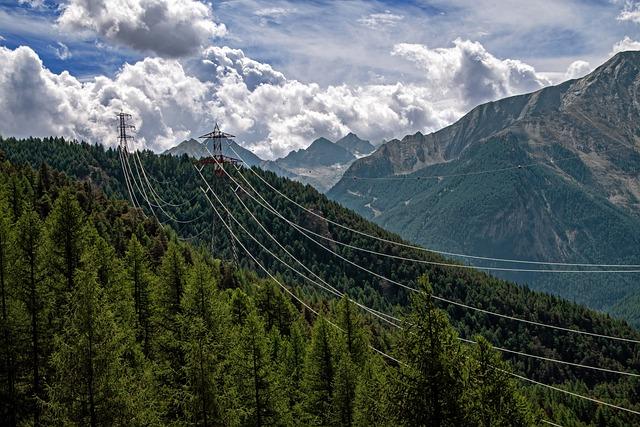Trees are more than just flora; they are natural sculptures that can be found all around us. From towering redwoods to twisted bonsais, trees come in a variety of shapes and forms that showcase the beauty and complexity of the natural world. In this article, we will explore the fascinating ways in which trees can be seen as natural sculptures, highlighting their unique characteristics and the role they play in shaping our environment.
Table of Contents
- Exploring the Artistry of Trees
- The Intricate Details of Nature’s Sculptures
- Utilizing Tree Form and Shape in Landscaping
- Appreciating the Beauty and Elegance of Tree Sculptures
- Preserving and Maintaining Tree Sculptures in the Environment
- Q&A
- Conclusion
Exploring the Artistry of Trees
One cannot help but marvel at the intricate and graceful beauty of trees in nature. Their elegant branches and twisting trunks create a natural form of sculpture that captivates the eye and intrigues the mind. Trees have a unique ability to grow and shape themselves in ways that resemble the work of master sculptors, making them truly remarkable pieces of living art.
Just like sculptures, each tree tells its own story through its size, shape, and texture. Some trees stand tall and proud, their branches reaching towards the sky in a majestic display of strength and resilience. Others twist and bend in graceful curves, as if dancing with the wind. The patterns of their leaves, bark, and roots add even more depth and character to their artistic form.
As we walk through a forest or park, we are surrounded by a gallery of natural sculptures created by trees. Each one is a masterpiece in its own right, showcasing the beauty and creativity of the natural world. Take a moment to appreciate the artistry of trees and the profound impact they have on our environment and our lives.
The Intricate Details of Nature’s Sculptures
When you take a stroll through a lush forest or meander through a wooded park, it’s easy to be captivated by the natural sculptures that surround you. Trees, with their twisting branches and gnarled trunks, are like living artworks that have been sculpted by the elements over time. Each tree tells a unique story, showcasing the power and beauty of nature’s handiwork.
Reaching towards the sky, trees stand tall and proud, their branches branching out in intricate patterns. Some trees have roots that twist and wind around rocks, creating a stunning display of strength and resilience. The bark of a tree can be smooth and elegant or rough and rugged, adding texture and character to its form. With every gust of wind and change of season, trees evolve and transform, adding to their already awe-inspiring presence.
Utilizing Tree Form and Shape in Landscaping
Trees are not just any ordinary landscaping element – they are natural sculptures that can be utilized to create stunning outdoor spaces. By understanding tree form and shape, landscapers can enhance the aesthetic appeal of a garden or yard.
- **Branch Structure**: The way branches are arranged can create visual interest. Experiment with different pruning techniques to showcase a tree’s natural shape.
- **Canopy Shape**: Trees with different canopy shapes - such as conical, oval, or weeping – can add variety and dimension to a landscape.
- **Trunk Texture**: The texture of a tree’s trunk can also be used creatively. Smooth, rough, or peeling bark can provide contrast and visual appeal.
By strategically placing trees with varying forms and shapes, landscapers can create a dynamic and visually appealing outdoor space that is sure to impress.
Appreciating the Beauty and Elegance of Tree Sculptures
When we think of sculptures, we often imagine intricate statues or art pieces created by human hands. However, nature itself is a master sculptor, with trees being one of its most beautiful creations. Tree sculptures are living artworks that showcase the elegance and beauty of nature in a unique and compelling way.
From the intricate twists and turns of a bonsai tree to the towering branches of a majestic oak, tree sculptures come in all shapes and sizes. Each tree has its own story to tell, with its branches and leaves forming intricate patterns that are truly awe-inspiring. These natural sculptures can be found all around us, in forests, parks, and even in our own backyards, reminding us of the stunning beauty of the world we live in.
Preserving and Maintaining Tree Sculptures in the Environment
When discussing the preservation and maintenance of tree sculptures in the environment, it is important to recognize the beauty and significance of trees as natural sculptures. Trees have the ability to grow and twist in unique and captivating ways, creating stunning works of art in the natural world. These tree sculptures add character and charm to outdoor spaces, making them a valuable asset to our environment.
To ensure the longevity of tree sculptures, proper care and maintenance practices must be implemented. This includes regular pruning to maintain the desired shape and form of the tree sculpture. Additionally, it is important to monitor the health of the tree to detect any signs of disease or insect infestation that could potentially harm the sculpture. By taking proactive measures, we can help to preserve these natural works of art for future generations to enjoy.
Q&A
Q: What are natural sculptures and how do trees fit into this category?
A: Natural sculptures are forms created by natural elements without human intervention. Trees can be considered natural sculptures due to their unique shapes and forms.
Q: How do trees become such visually striking natural sculptures?
A: Trees can take on various shapes due to factors like genetics, environmental conditions, and growth patterns. These factors can result in trees growing in unusual and aesthetically pleasing ways.
Q: Are there specific tree species that are known for their sculptural qualities?
A: Yes, some tree species like the Japanese maple, bonsai trees, and the dragon’s blood tree are renowned for their sculptural beauty. These trees can have distinctive shapes and forms that make them stand out in the natural landscape.
Q: How can trees as natural sculptures enhance the environment?
A: Trees not only provide aesthetic beauty but also contribute to environmental health by providing oxygen, shade, habitat for wildlife, and reducing air pollution. Their sculptural qualities can further enhance the visual appeal of natural landscapes.
Q: Can trees be considered works of art in the realm of natural sculptures?
A: Yes, trees can be seen as works of art in the natural world, as they exhibit beauty, complexity, and uniqueness that are appreciated by many. Their sculptural qualities can evoke a sense of wonder and admiration in those who observe them.
Conclusion
In conclusion, trees serve as natural sculptures that have been shaped by a variety of factors including genetics, environment, and human intervention. Their unique forms and intricate patterns capture the beauty and diversity of the natural world. As we continue to appreciate and protect these living artworks, we can also gain a greater understanding of the interconnectedness of all living things. Next time you encounter a particularly striking tree, take a moment to marvel at its sculptural qualities and contemplate the wonders of nature’s creativity. Thank you for reading.
Simpsons Tree Services, Servicing Melbourne’s North Eastern Suburbs
Book a quote online at www.simpsonstrees.com.au



